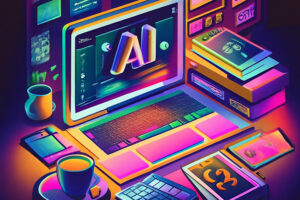In today’s rapidly changing digital landscape, leveraging artificial intelligence (AI) technology has become crucial for various aspects of software development, including creating user stories. Understanding how to use AI for user stories effectively can significantly enhance your software development process, enabling you to generate more accurate, insightful, and effective user stories with ease.

Understanding User Stories
User stories are short, simple descriptions of a feature told from the perspective of the person who desires the new capability, usually a user or customer of the system. These stories are intended to describe how a particular feature will provide value to the user. They follow a simple format that includes the user type, the action they want to perform, and the benefit from that action.
The Role of AI in User Story Creation
The potential of AI in creating user stories is vast. AI tools can analyze vast amounts of data to identify user needs and preferences, thereby making it easier to create user stories that accurately reflect user requirements. The employment of AI in writing user stories not only saves time but also ensures consistency and accuracy.
Enhancing Accuracy with AI
AI algorithms can provide more accurate insights into user behaviors and preferences by analyzing historical data. This leads to user stories that are not only aligned with actual user needs but are also innovative in approach, pushing the boundaries of conventional software development.
Tools for Developing AI-Driven User Stories
Several AI-powered tools have emerged to help developers generate user stories. Some popular examples include AI-driven analytics platforms and natural language processing (NLP) tools that can interpret and create comprehensive user stories from raw user data.
Implementing AI with Existing Platforms
Integrating AI into existing platforms can be seamless with the right approach, facilitating the generation of user stories without the need for extensive coding knowledge. For instance, platforms that support plugins or have extension capabilities can utilize AI tools to automate the user story creation process.
AI and Agile Development
The use of AI in Agile environments can transform the way user stories are developed. In Agile methodologies, where changes are frequent and rapid delivery is essential, AI-driven automated systems can keep teams ahead by ensuring that the user stories are always relevant and up-to-date, aligning with the current sprint objectives.
Best Practices for AI-Integrated User Stories
To maximize efficiency, it’s crucial to adopt best practices when integrating AI tools into your user story development process. This includes continual testing and iteration, utilizing feedback loops to constantly refine AI-generated user stories.
Feedback and Continuous Improvement
One of the key aspects of AI adoption is leveraging the feedback from AI-generated stories to improve future outputs. Furthermore, allowing the AI to learn from previous iterations ensures that the platform becomes smarter and more efficient over time.
Case Studies of Successful AI Implementation
Numerous companies have successfully integrated AI into their user story creation processes, showing tangible improvements in delivery timelines and user satisfaction. For instance, organizations using AI in agile teams have reported up to a 30% reduction in development time while improving stakeholder engagement and satisfaction.
Challenges and Considerations
Despite the benefits, there are challenges to consider. The successful integration of AI requires an understanding of its limitations as well as the potential biases inherent in AI tools. Regular monitoring and adjustment are essential to ensure that AI tools remain effective and unbiased over time.
Ethics of AI in Development
Considering ethical implications is crucial when using AI for creating user stories. Developers must ensure that AI systems are transparent and hold accountability, especially in critical decision-making situations that impact users directly.
Future of AI in User Story Development
The future landscape is promising as AI technology continues to advance. The possibilities are vast, ranging from fully automated user story generation to advanced predictive models that anticipate user needs before they arise. These advancements could further revolutionize the field of software development.
For more detailed insights into AI tools and how they can aid in development, consider [reading this post](https://clickup.com/blog/ai-tools/) on AI tools.
Conclusion
Understanding how to use AI for user stories can significantly impact your digital product development journey. By embracing AI, you can enhance your project’s efficiency, accuracy, and relevance when crafting user stories. With ongoing advancements, the integration of AI in your development workflow could be the key to unlocking greater innovation and success.

FAQs on AI and User Stories
How can AI improve user stories?
AI can provide enhanced accuracy by analyzing user data to predict and develop user stories tailored to user needs. It can automate parts of the process, saving time and improving quality.
What tools are best for AI integration in user stories?
There are various AI tools available, each with unique capabilities. Popular AI tools like natural language processing engines and prediction algorithms are particularly effective for generating insightful user stories.
Can small businesses benefit from using AI for user stories?
Yes, small businesses can significantly benefit from AI by using it to streamline their development processes and make informed decisions by gaining insights from data-driven user stories
Explore more about quality AI tools in this [blog post](https://dzinerstudio.com/what-is-the-best-ai-chatbot) on finding the best AI chatbots or delve into AI image generation with this guide.







